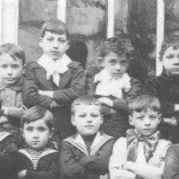
Figure 1.--These younger German boys in about 1915 wear mostly smocks and sailor suits.


Figure 1.--These younger German boys in about 1915 wear mostly smocks and sailor suits. |
German schools during the First Reich (Imperial Germany) did not normally require boys to wear school uniforms. Boys were allowed to wear the clothes parents selected for them. Despite the considerable interest of Germans in uniforms, there does not seem to have been a great interest in adopting a school uniform.
German states had a highly regarded eduucational system at the time the German Empire was proclaimed in 1870. It was not, however, centalized. The states brought into the Empire retain considerable authority over internal matters such as education, not unlike Americam states. The quality of German education, however, was recognized throughout Europe. German schools and pedagoues were head up as examples. The Germans were particularly influential in America. American scholars studies in German universities.
Younger boys commonly wore smocks like French boys. I'm not sure when this practice began are how it changed over time. Sailor suits were also popular school wear. I currently have some information on the 1910s, but little on boys wear during the earlier Imperial period.
I have little information on different types of Geerman school and do not
understand the German education system in general. Perhaps some German
visitors to HBC will provide some background.
The German Empire lasted for nearly 50 years. As a result, there were a range of fashions worn over this period and styles changed over time. The ages of boys wearing the different styles alsi changed. Some of the fashions worn to school during the Imperial period include the following.
Smocks: Little German boys commonly wore smocks to school by
the 1910s. I'm not sure if older boys wore smocks in earlier periods.
The French Third Republic introduced
school smocks in the 1870s after the disastrous
Franco Prussian War. The idea was to promote eqalitarian education by covering over the clothes of poor and more well off children. I'm not sure when they were introduced in Germany or how common they were. The smocks were often worn with large bows, especilally the smocks for younger boys.
Sailor suits: Sailor suits were commonly what the convention wasInterestingly, sailor suits continued to be a popular style for boys, including older boys. I think quite old boys wore them, but I know they were
very common for younger boys in the early 20th cenbtury. At some schools large numbers of boys wore them, but there are few class pictures without at least some boys wearing them. They were mostly worn with kneepants in the late 19th Century and short pamts by the 1910s. Quite a wide variety of styles were available.
Suits:
Pants: German boys mostly wore kneepants with long stockings during the late 19th
Century. I don't think knickers were commonly worn, but I could be wrong about this. Boys began to wear short pants with knee socks after the turn of the century and
they became increasingly common in the 1910s.
Hair styles: Schoolboys in Imperial Germany often had their hair clipped short, almost shaved in a military fashion. Boys in such short
hair were usually dressed in sailor suits or other military uniforms.
At this time we have a few images of German school children during the the imperial period. Unfortunately they are all during the later 20th century pre-World War I era. years. We do not have much information on the 19th century. These inmages of school classes during the Imperial period show that uniforms were not worn, but that the sailor suit and middy blouse were especially popular for school wear. We notice quite a variety of other styles including square collar blouses and lederhosen as well as plain shotys and jackets. Most children wore heavy boot like shoes, but a few c ame to school barefoot. Unfortunately many of the available school images are not dated. This makes it more difficult to floow changing fashion trends. We have attemped to estimate dates, but this in many cases is not an easy process. We welcome any insights as to the dates of these various calss portraits ftom out German readers.
Related Chronolgy Pages in the Boys' Historical Web Site
[Main Chronology Page]
[The 1850s]
[The 1860s]
[The 1870s]
[The 1880s]
[The 1890s]
[The 1900s]
[The 1910s]
Navigate the German school pages
[Main school uniform page]
[Main school uniform national page]
[Main German school uniform page]
[Imperial Germany]
[Weimar Republic]
[NAZI era]
[Post-war Years]
[Modern Germany]
Navigate the Relate Boys Historical Clothing Style Pages
[Main country page]
[Long pants suits]
[Short pants suits]
[Lederhosen]
[Kneesocks]
[Eton suits]
[Jacket and trousers]
[Blazer
[School sandals]
Navigate the Boys' Historical Clothing Web Page
[Introduction]
[Activities]
[Biographies]
[Chronology]
[Clothing styles]
[Countries]
[Bibliographies]
[Contributions]
[Essays]
[FAQs]
[Glossaries]
[Satellites]
[Tools]
[Boys' Clothing Home]
